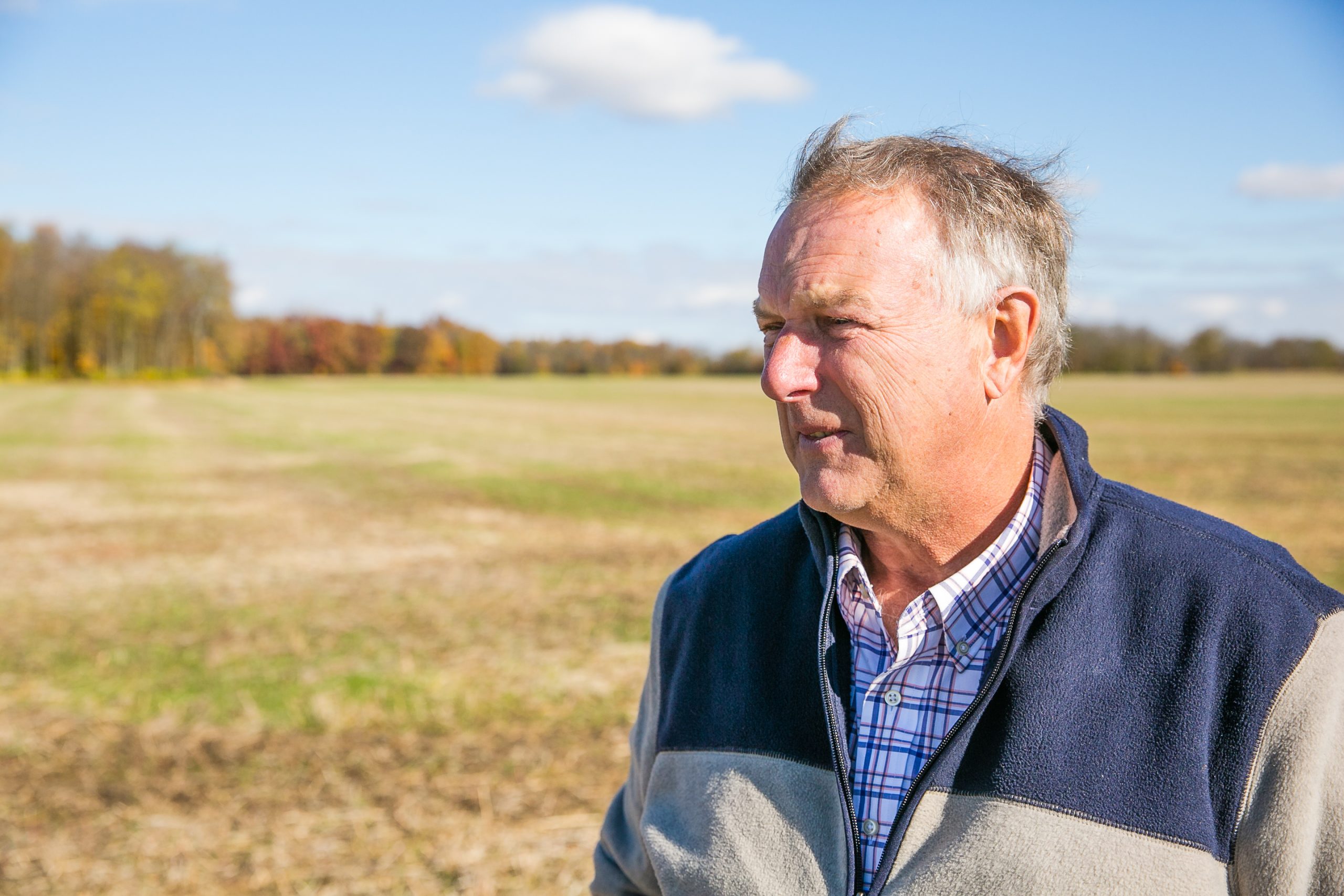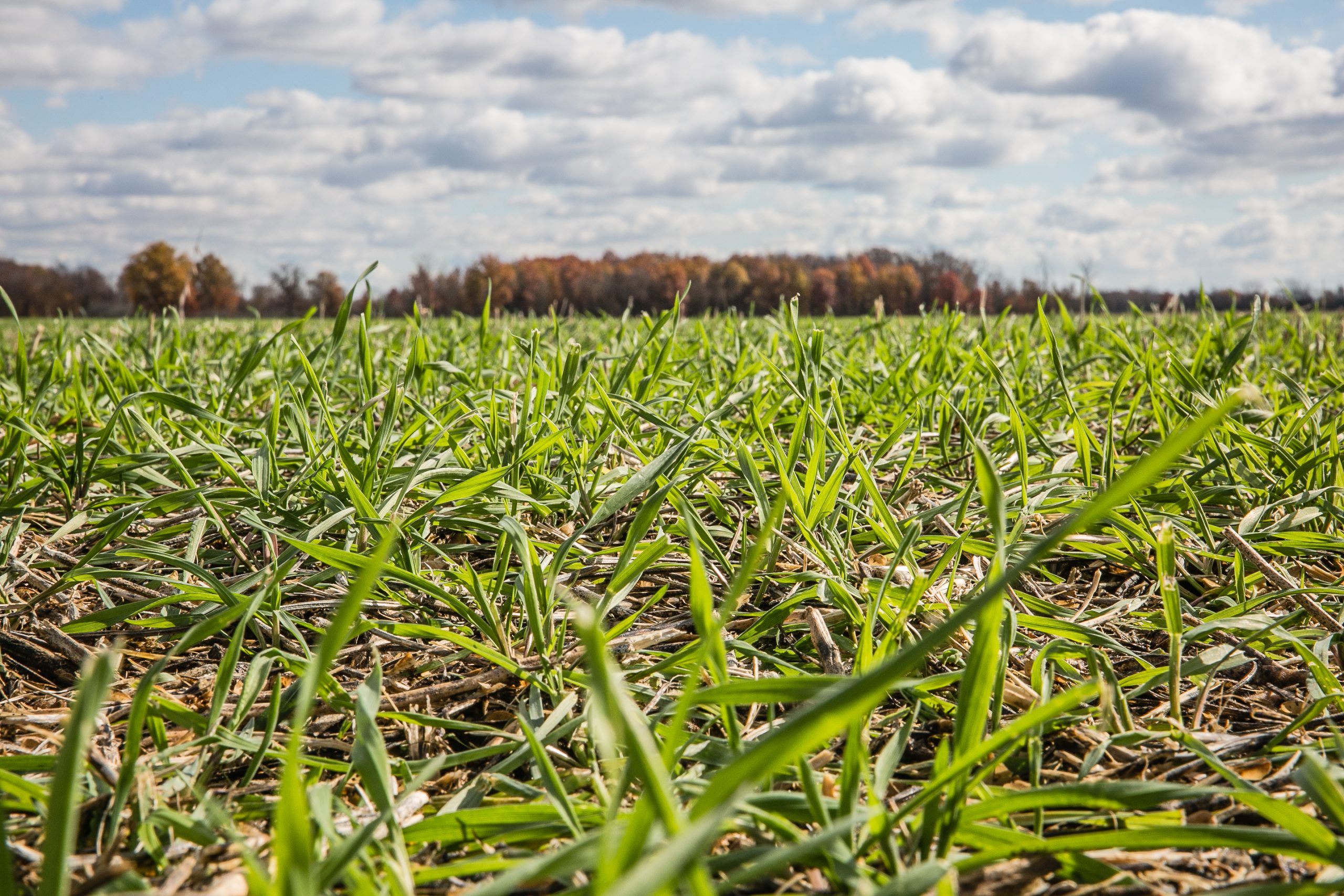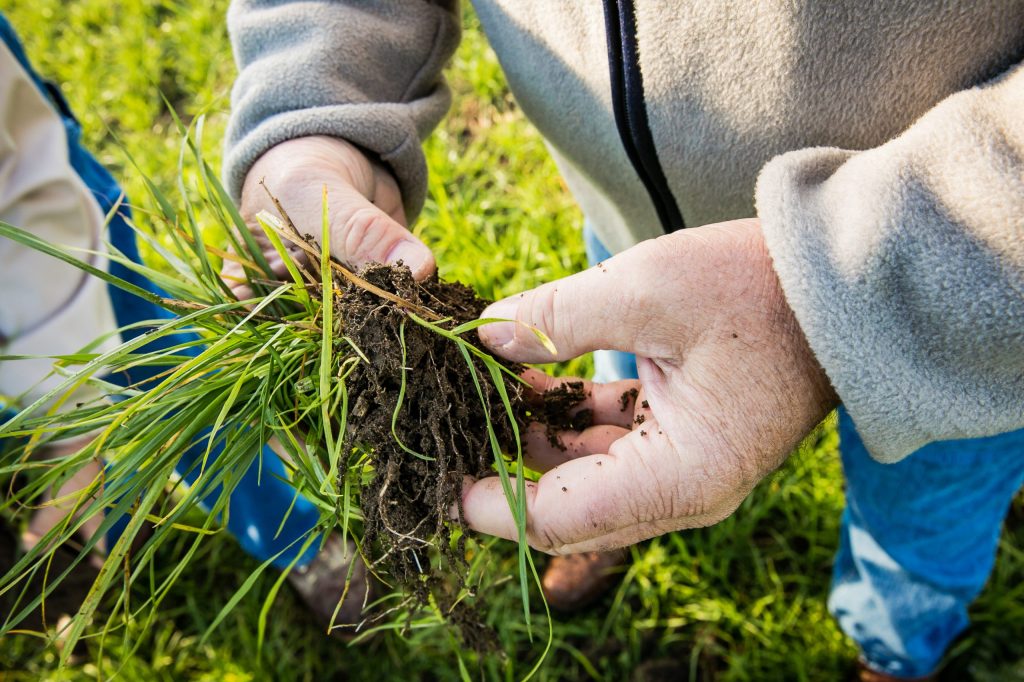The first year Allen Dean planted a Spring cover crop of oats, he was stunned to see his winter barley come up, green and dark, just one week after planting.
“I thought, wow, I can’t believe that stuff came up that quick,” says the Northeast Ohio farmer of soybeans, wheat and barley. Dean was so fascinated, he decided to walk the 27-acre barley field. It was like “walking on a sponge,” with all the earthworm middens, he says. “Those earthworms had literally turned that farm upside down.”

A cover crop enthusiast for more than 14 years now, Dean sees big benefits and amazing changes to his soil, from increased water holding capacity, to less erosion from wind or rain, to better soil biology. And, he says, “it’s producing better cash crops.”
More farmers have been turning to cover crops these past few years, and for good reason.
Research shows that they can improve the long-term health and profitability of farms. Among their many potential benefits, they reduce erosion by keeping living roots in the soil and maintaining a ground cover. They build soil organic matter and improve soil structure, which can help farm fields better withstand drought, floods and other increasingly unpredictable and extreme weather, while offering farmers an opportunity to participate in soil carbon markets. They also suppress weeds, which can reduce the need for herbicides and save farmers money.
Significantly, cover crops also complement 4R Nutrient Stewardship practices—which refer to using the right fertilizer source at the right rate, at the right time, and in the right place—by improving nutrient cycling and reducing nutrient leaching and runoff. When 4R management plans are coupled with cover crop practices, both the farming operation and the environment benefit.
“What we’ve found is cover crops is a pretty easy way… and a cool practice that can help improve our 4Rs. They really contribute,” says Lisa Kubik, a farmer and the former Iowa Field Manager for the Soil Health Partnership, a farmer-led initiative of the National Corn Growers Association, that worked with farmers from 2014 to 2021 to study the economic and environmental benefits of soil health practices.

Take the example of cereal rye, a popular cover crop that corn and soybean farmers work into their fall rotation. Cereal rye is so effective at scavenging nitrogen that some studies show it can capture more than half of the residual nitrogen that might otherwise have leached from soil, and potentially impacted water quality. It’s also been shown to reduce phosphorus loading by 29 percent, and increase soil aggregate ability after four years, which in turn leads to better water filtration, less soil crusting and erosion.
As Kubik explains, “If we have any nitrogen left over, or fertilizer in the field, the cover crop will uptake those nutrients and make sure we’re not losing them over the winter into the spring when we don’t have a crop there. It can definitely help with timing and making sure we’re not losing our nutrients.”
Fall Cover Crops
Planting a fall cover crop like cereal rye is especially beneficial when there’s a rainy spring the following year, and a greater chance to lose some of the nutrients that were applied in the fall. Planting a cover crop in the fall can similarly help keep nutrients on the farm after extreme summer weather. The derecho that swept through central Iowa in August 2020, for example, toppled the corn crop in some areas, and because it was not able to be harvested, a lot of nutrients were left in the fields. Planting a cover crop offered the farmers suffering these losses a great opportunity to preserve the nutrients for the next spring, according to Kubik.
But, Kubik also cautions that cover crops are not a replacement for fertilizer. Studies show that while the cover crops absorb the nitrogen in the soil, not enough of it comes back into the system after the cover crop is terminated to provide sufficient nutrients for the next crop.
And she says, “you can’t just dump a bunch of fertilizer out there and say, ‘my cover crops will take care of it.’ We still need to be good stewards about how we’re applying nutrients to the land.”

In the past, cover crops may have gotten a bad rap for knocking corn and soybean yields the following year, but Kubik says that more recent research shows that’s not the case. A six-year study conducted by the Soil Health Partnership did not find any yield difference on average, and if it did find a difference, that difference was more associated with a known management issue, something that happened between planting and harvesting of the cash crop.
“We’ve gotten pretty good at managing these cover crops, and as long as you follow a certain number of steps, most of the time we don’t see any yield difference,” says Kubik.
As far as seed costs go, there are a lot of programs that offer financial support or cost sharing, including national USDA programs and local NRCS offices, or other state or local programs. Because cover crops are so trendy now, “there are tons and tons of resources out there,” says Kubik. “It’s pretty hard not to find them if you’re trying to look.”
Farmers working with the Soil Health Partnership paid an average $15 per acre for cover crop seed and $12 per acre to apply the seed in 2019.
“Start Slow”
For farmers who want to try cover crops, Kubik’s biggest recommendation is to start slow and with a small trial, say on 20 to 40 acres and with a single variety. It’s important to make sure cover crops fit with your operation, she says, and to avoid any potentially big management problem your first year. Second, it’s important to find a mentor—a neighbor or another farmer who’s already adopted cover crop use, who can guide you.
Finally, it’s important to recognize that there is no one way, or right way, to approach cover crops. It will depend on the farmer’s goals, the equipment they already have on hand or could acquire to plant the seed, their current cropping system, and climatic zone. Different crops serve different purposes, whether for nutrient uptake, weed control, building soil organic matter, or for grazing livestock.
In Ohio, Dean turned to cover crops to keep his soils and nutrients from washing off his farm during heavy rainfall events. He first planted radishes, a winter kill cover crop that terminates on its own in cold temperatures, and experimented on a few fields. Dean found that the radishes opened up the soil and helped with drainage, but not enough to prevent gullies and rills from forming during large rainfall events in the spring. So, the following year he planted cereal rye, a hardy winter cover crop with deep roots, along with the radishes, and found that those two crops together kept his soil intact during the next spring’s rains.
Each year Dean experimented with adding new cover crops to the mix. Eventually he even launched his own cover crop side business. “I tell farmers it is truly the new frontier in agriculture,” he says.




Join the Discussion